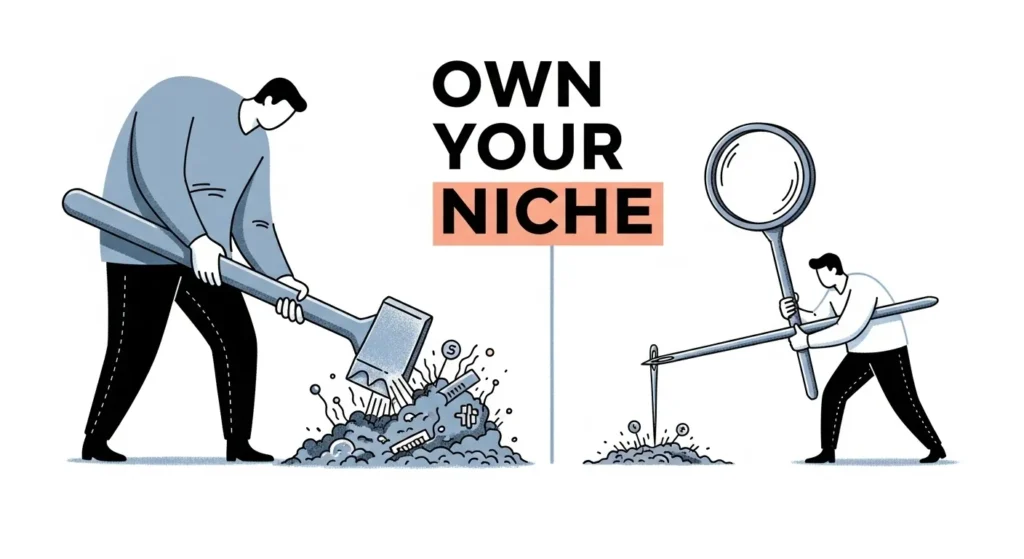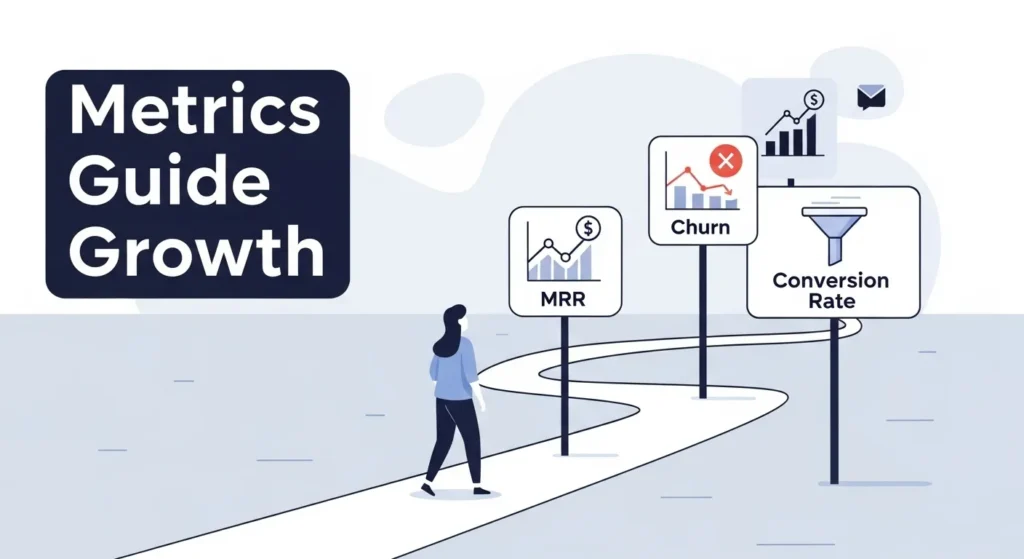You’ve built your micro SaaS, and you’re starting to get your first customers. But what happens when you look at the competition and see a giant company with a huge team and a polished product? It’s easy to feel intimidated. However, the secret to micro SaaS success isn’t about beating the giants at their own game. It’s about playing a different game entirely. This guide will show you how to compete with larger SaaS and master micro saas growth strategies while scaling with limited resources.
Growth and scaling are vital phases in the micro SaaS lifecycle. This article is a key part of our ultimate guide, which covers everything from finding an idea to achieving a successful exit: The Ultimate Guide to Micro SaaS: From Idea to Exit.
Your Secret Weapon: How to Compete with Large SaaS
When it comes to micro saas competition, your small size is not a weakness—it’s your greatest strength. Large, established companies are big and slow. They have too many customers to serve everyone perfectly and too many features to build any of them flawlessly. This leaves huge opportunities for you.
- Own Your Niche: A big company might serve a broad market, but they can’t possibly solve the tiny, specific problems of a small group. Your micro SaaS can do exactly that. By focusing on a very small, specific audience, you can become the perfect solution for them. You’re not trying to be a general tool for everyone; you’re trying to be the best tool for a select few.
- Provide Unbeatable Customer Support: A large company has a support team, but you have something better: yourself. As a founder, you can offer personal, fast, and friendly customer service that a big company can’t. Your customers can talk directly to the person who built the product. This builds incredible loyalty and word-of-mouth marketing.
- Be the Specialist: Your large competitor might have 50 different features. But they might not have your one feature that solves a single, painful problem perfectly. By focusing on doing one thing exceptionally well, you can beat them on that one feature every time. Your product is simple, easy to use, and does its job flawlessly, which is often what customers truly want.

These micro saas growth strategies are your unfair advantage in the market.
Scaling with Limited Resources
When you start to get more users, you’ll feel the pressure to keep up. As a solo founder or small team, you can’t just hire more people. This is where mastering scaling with limited resources becomes key. It’s about working smarter, not harder.
- Automate Everything You Can: You can’t manually send a welcome email to every new user or respond to every basic question. Use tools to automate simple tasks. Set up automated email sequences for new sign-ups, and use a simple support form that answers frequently asked questions. Automation frees up your time to focus on the things only you can do, like talking to customers and improving your product.
- Focus on One Growth Channel: When you’re just starting, don’t try to be on every social media platform or run every kind of ad. Pick one or two marketing channels that work best for your niche and focus on mastering them. For a micro SaaS, this is often content marketing (writing helpful articles for your audience) or community building. For more on this, read our guide on Micro SaaS Marketing Strategies.
- Ruthlessly Prioritize: As your business grows, you’ll have a never-ending list of things to do. You have to decide what’s most important and ignore the rest. Should you build a new feature or fix a bug? Should you create a new marketing campaign or improve your existing one? Scaling is about being smart with your time and choosing the actions that will have the biggest impact on your business.
How Metrics Guide Your Scaling
You can’t effectively scale if you don’t know what’s working. This is where your business metrics come in. Proper metric tracking helps identify scaling opportunities and shows you where your efforts will have the most impact.
- Look at your MRR and Churn: Is your revenue growing? Are people staying? If your churn rate is high, you shouldn’t focus on getting new customers. Instead, you should focus on fixing the issues that are causing people to leave.
- Look at Your Conversion Rates: Is your website turning visitors into users? If your conversion rate is low, spending money on more marketing won’t help; you need to improve your website’s messaging or design first.

These numbers give you a clear map for your growth strategies. We cover these in detail in our guide on The Most Important Metrics to Track for Micro SaaS Success.
Final Thoughts on Competing and Scaling
The journey of growing a micro SaaS is a unique one. You might not have the budget or team of a large competitor, but you have something more powerful: speed, focus, and a direct connection to your users. By embracing these strengths, you can not only compete with the giants but also build a profitable, sustainable, and thriving business.

